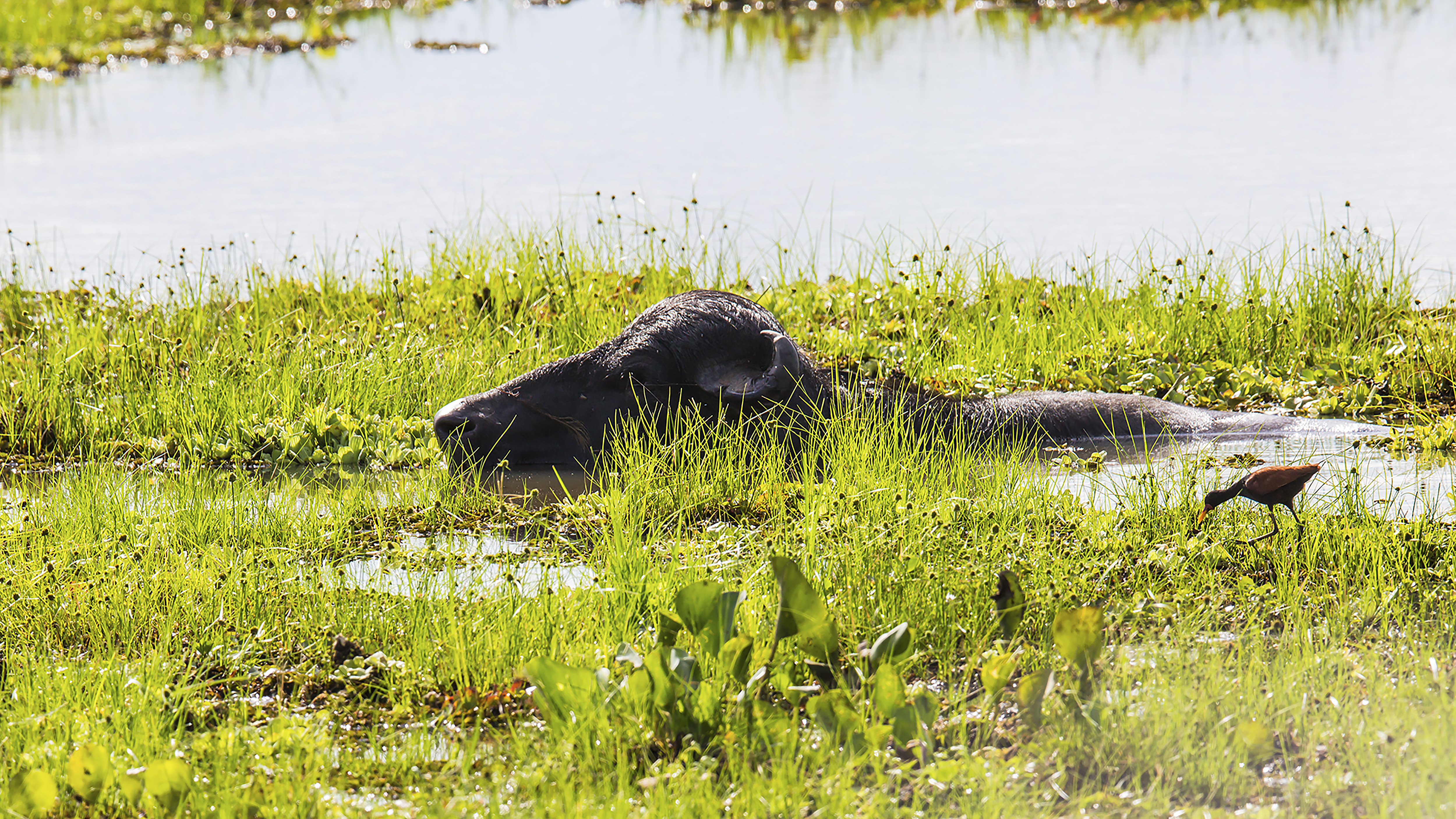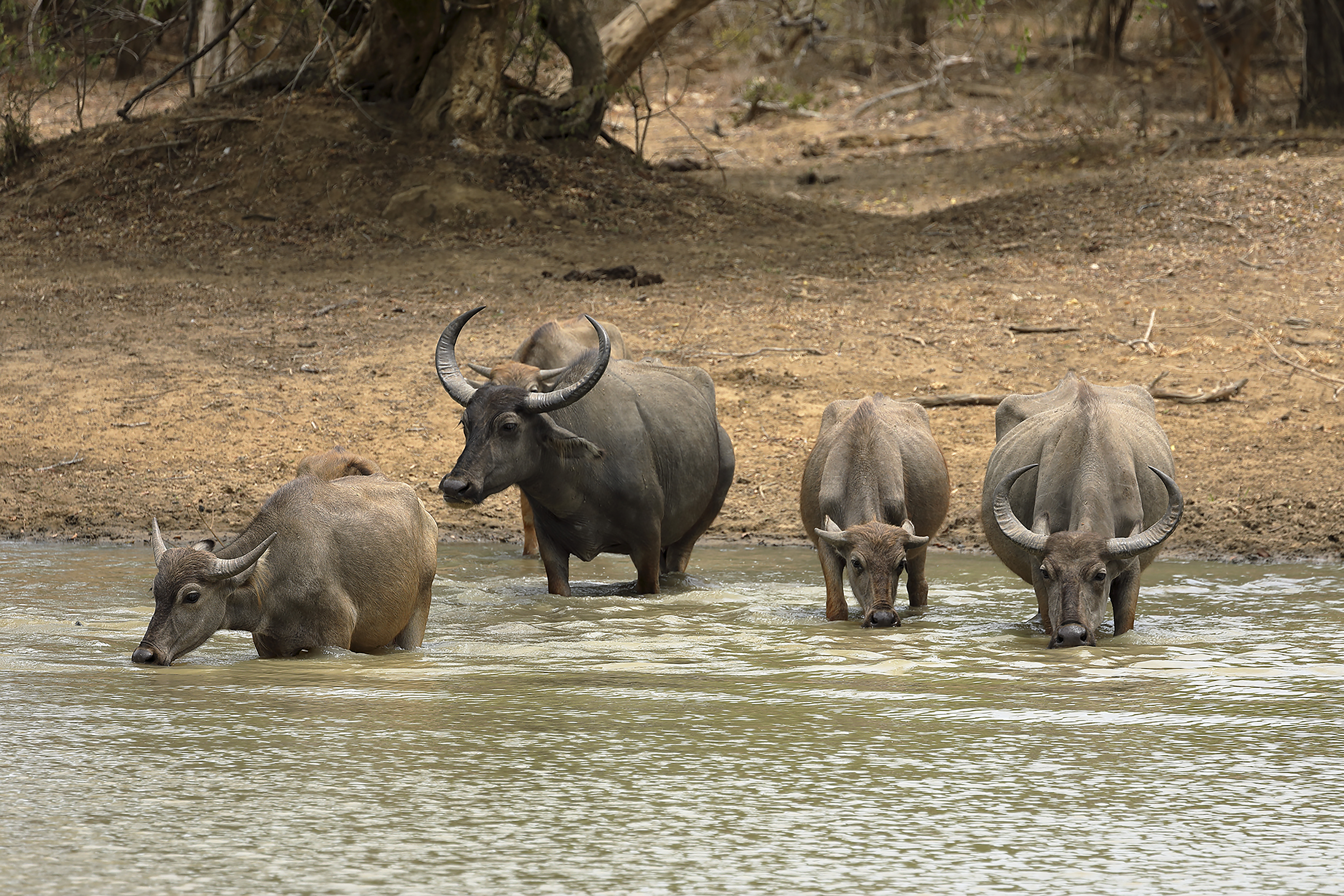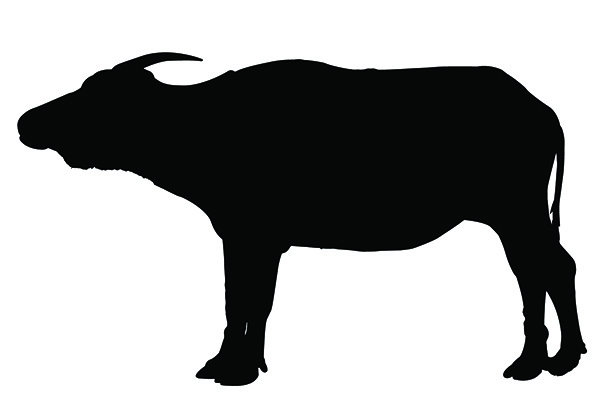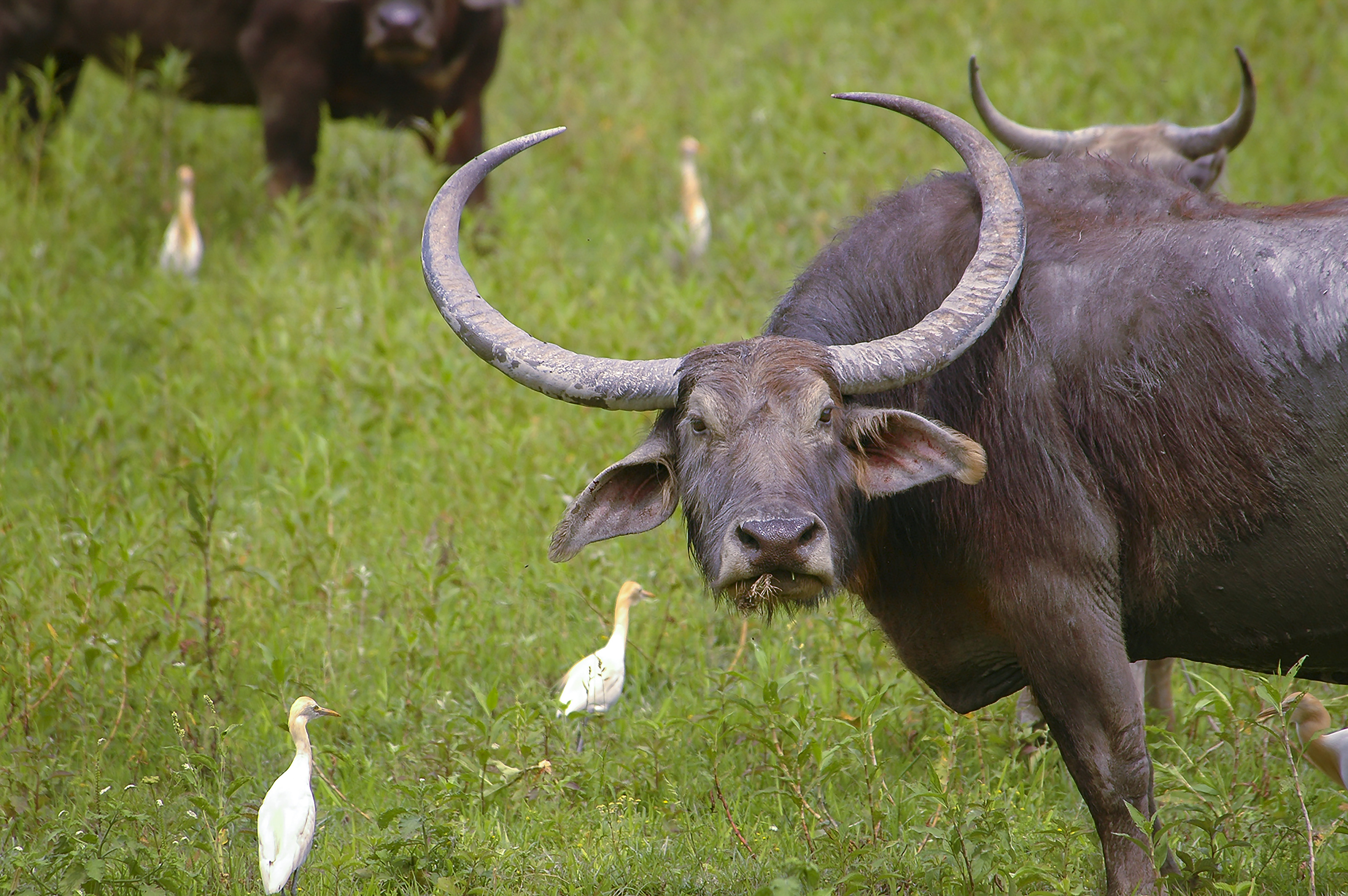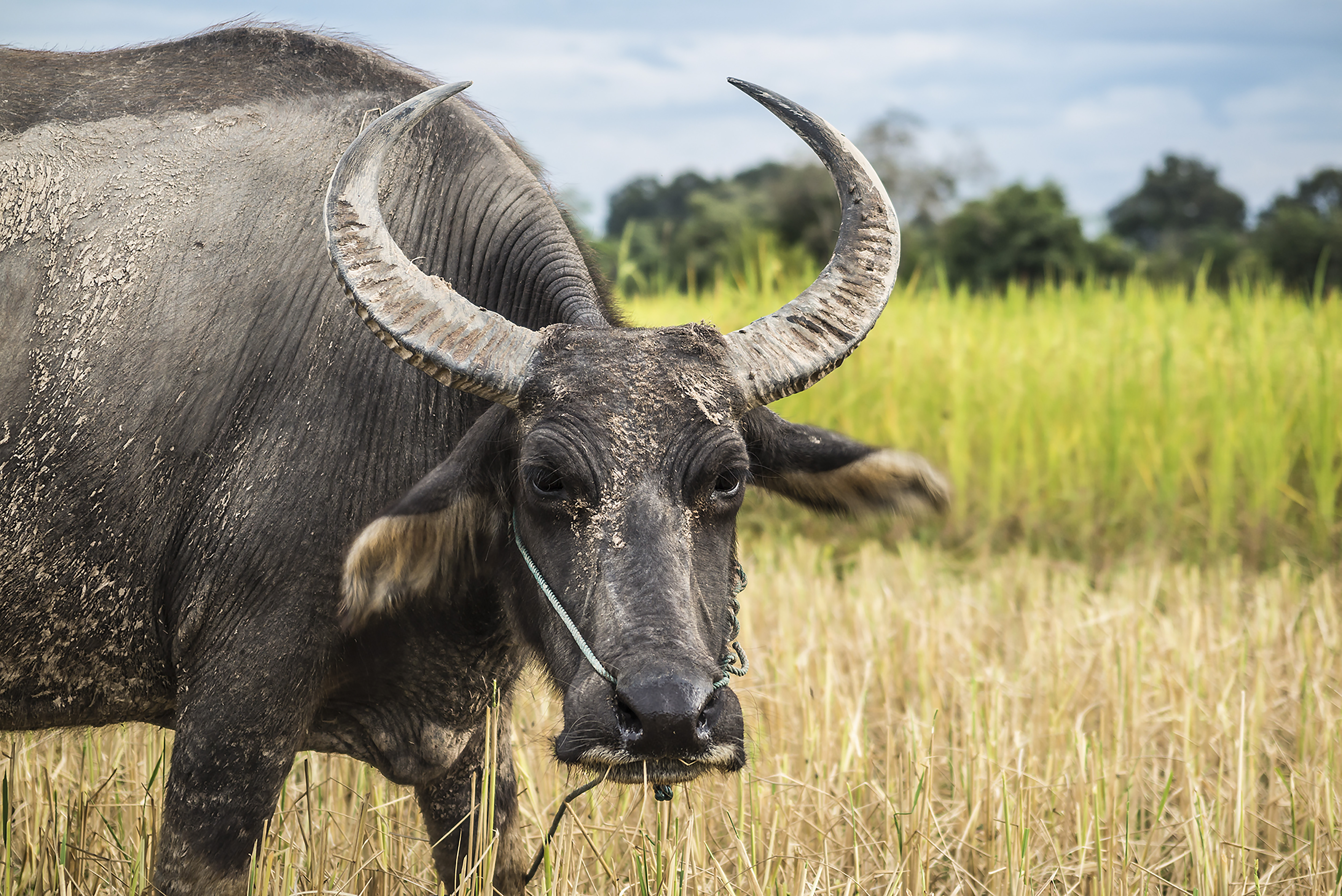Wild Water Buffalo
(Bubalus arnee)
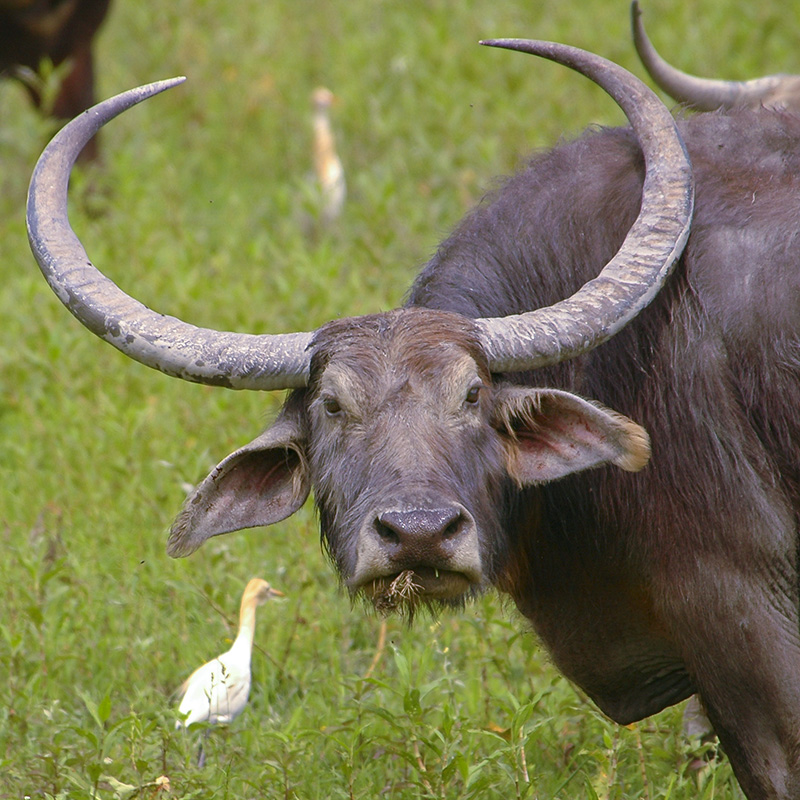
Naga-Manapuri-Chin Hills Moist Forests
STATISTICS
Height up to
1.9 meters
Length up to
300 cm
Weight up to
1200 kgs
Lifespan
25 Years
Aggressive - Acute Hearing - Broad Hooves to Walk on Muddy Ground
The Wild Water Buffalo is the heaviest living bovid species, weighing on average 900 kgs with widespread horns of up to 2 meters. Its skin is ash grey to black with coarse hair. This species prefers to live close to the water and can be found in grasslands, riverbanks, and riparian forests and woodlands. It spends its time wallowing in pools of mud or water; mud, in particular, helping it to keep cool. Large herds of Wild Water Buffalo may threaten nesting sites of water birds as well as impact Caiman populations. Trampling on flora may damage certain species; however, its faeces is believed to be a fertiliser for particular plants.
The Wild Water Buffalo grazes predominantly on grasses, but it may also eat fruit and bark. It is a selective feeder and will walk long distances in search of food. The Wild Water Buffalo forms maternal groups of a loosely structured herd of 20 – 100 individuals. Young males form small bachelor herds of up to 10 individuals while old males remain solitary. The female gives birth to a single offspring; the gestation period is 10 – 11 months. Tigers, crocodiles and Asian Black Bears prey on the Wild Water Buffalo
BIODIVERSITY BENEFIT
Food Source, Nutrient Cycling
THREATS
Loss of Genetic Diversity
Due to interbreeding with domestic and feral buffalos.
Hunting
Hunted for their hide and horns.
Disease
Disease outbreaks from livestock
Habitat Loss
Due to fragmentation and degradation of forest.
PROTECT THE WILDARK 100
